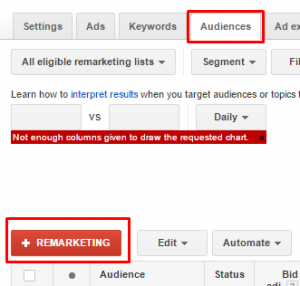In several recent conversations about Marketing accountability, a question consistently surfaced about which metrics demonstrate Marketing’s value regarding strategy and upstream marketing? It’s a great question. We have some thoughts on metrics and what to measure, but before we launch into these, let’s be sure we’re on the same page about what is meant by Upstream Marketing.
How to Distinguish Upstream from Downstream
In his book Profitable Growth is Everyone’s Business, Dr. Ram Chara, who has taught at Boston University, Northwestern University, and Harvard’s Business School, explains the difference between upstream and downstream Marketing. Dr. Chara defines Downstream Marketing as efforts such as advertising, promotion, brand building, and other forms of communication and engagement, including PR, events, and content. He proposes that the purpose of Downstream Marketing is to motivate customers to adopt existing products and services.
Upstream Marketing, Dr. Chara says, refers to “the strategic process of identifying and fulfilling customer needs.” This is achieved by developing clear customer segments, analyzing how the customer uses the product or service, and determining the competitive advantage needed to acquire the customer. Based on this thinking, Upstream Marketing includes everything from deciding and defining which markets and customers to pursue and when and where to approach them, to the methods, offers, and messaging to use to acquire their business.
Putting a Number on the Value of Upstream Marketing
Let’s delve deeper into the measures and metrics. Measures such as open and clickthrough rates, website traffic, Marketing generated qualified leads, and qualified lead-to-deal ratio are examples of downstream measures. These measures and metrics provide insight into demand (small d) generation and program effectiveness and efficiency.
Upstream is about creating Demand with a capital D – Marketing’s ability to create the desire among existing and potential customers for your business’s products and services that motivates them to purchase. This is

Measures and metrics such as preference, adoption rate, and segment penetration rate begin to come into play in the Upstream
where measures and metrics such as preference, adoption rate, and segment penetration rate begin to come into play. Being able to establish performance targets and measure them against these types of metrics takes a different set of data than relying on Google analytics, CRM, or MAP (marketing automation platform) data.
Let’s examine two of these concepts to explores measures for Upstream Marketing: preference and penetration. Preference is typically defined as liking something more than the alternative, suggesting an inclination to purchase a specific product, service, or company. Preference, unlike awareness, has an economic implication. Therefore, we could measure preference in terms of the difference in revenue from a customer given the option of your offer versus an alternative.
Every day, we make choices about what we will buy. Some of these choices are strictly made on price – we do not perceive a difference in the value of one option over another, so anything will do. Preference suggests a perceived difference in value. This is why it is a good example of a measure for Upstream Marketing.
Establishing a preference target and measure will require data from analysis such as conjoint analysis, which allows you to estimate overall preference for a combination of attributes, including those that represent goods or services that are not currently available. This enables you to establish a preference measure even when potential buyers don’t have well-formed preferences.

Businesses needs measures and metrics for Marketing performed in the Upstream.
We’ll examine one more measure, market or segment penetration rate, to illustrate the importance of establishing measures and metrics for Upstream Marketing. Charles Hill, in his book Strategic Management Theory: An Integrated Approach, explores market penetration as a business strategy. This entails developing and implementing plans to enter markets or segments, new or existing, and successfully expanding within them.
Here’s a quick approach for how to create and leverage market/segment penetration as a metric:
- Use the total available market to set a realistic penetration target. Let’s say you determine your ideal customers are US-based mid-market business-to-business companies who buy X widgets per year. You can use the SIC database to determine the total number of mid-market companies who meet these criteria, and data for the average run rate for this type of widget. You now have a number that reflects what we’ll call the SAM (service available market).
- Determine the normal market penetration for your product in your SAM. Some experts suggest that the normal market penetration for a business product is between 10 and 40 percent.
- After accounting for any existing customers on the list, identify the potential new customers. For example, perhaps today you serve customers in the oil and gas sector and your widget is also an excellent solution in the mining and chemical industries. In this example, you would identify mid-markets in these specific verticals along with your existing vertical. Calculate the totals in terms of customers and potential revenue for each vertical or geography. This is your penetration target. Remember to conduct a sanity check for your targets by analyzing how your number stacks up against the normal market penetration analysis and adjust accordingly.
You can use this method to determine whether expanding into the market is financially wise by using the penetration target and the price to calculate the potential revenue and profit of the segment. Just as important, you have a way to measure the value and contribution of the strategy.
These two examples are intended to spark your thinking about how to measure the value, impact, and contribution of Upstream Marketing.
Business & Finance Articles on Business 2 Community
(48)






